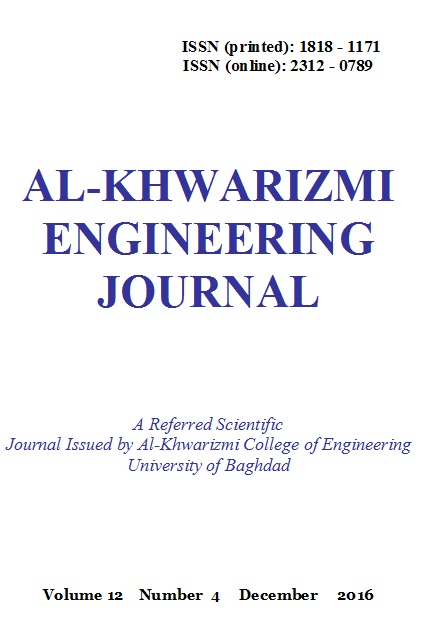Using Smart Control System to Enhancement the Split Air Conditioning System Performance
DOI:
https://doi.org/10.22153/kej.2016.05.001Keywords:
Split air conditioner A/C, Temperature control, Fan drive, PID controller, PIC16F877A microcontrollerAbstract
In IRAQ, the air conditioners are the principal cause of high electrical demand. In summer, the outer temperature sometimes exceeds 500C which significantly effects on the A/C system performance and power consumed. In the present work, the improvement in mechanical and electrical performance of split A/C system is investigated experimentally and analytically. In this paper, performance and energy saving enhancement of a split-A/C system was experimentally investigated to be efficiently compatible with elevated temperature weathers. This improvement is accomplished via Smart Control System integrate with Proportional-Integral- Differential PID algorithm. The PIC16F877A micro-controller has been programmed with the PID and PWM codes to control the speed of the proposed DC condenser fan over wide range of speed, also it has been programmed to have a smart characteristics to protect the A/C system parts as the ability to detect a refrigerant leakage, condenser fan stop, and any obstacles for the fan air flow. A comparative study between the conventional and enhanced A/C system is performed. The results show that the proposed system exhibits better performance and saves more energy than the conventional one. The Coefficient of Performance (COP) of the split- A/C system are improved by about 20.56%.
Downloads
Downloads
Published
Issue
Section
License
Copyright: Open Access authors retain the copyrights of their papers, and all open access articles are distributed under the terms of the Creative Commons Attribution License, which permits unrestricted use, distribution, and reproduction in any medium, provided that the original work is properly cited. The use of general descriptive names, trade names, trademarks, and so forth in this publication, even if not specifically identified, does not imply that these names are not protected by the relevant laws and regulations. While the advice and information in this journal are believed to be true and accurate on the date of its going to press, neither the authors, the editors, nor the publisher can accept any legal responsibility for any errors or omissions that may be made. The publisher makes no warranty, express or implied, with respect to the material contained herein.
















